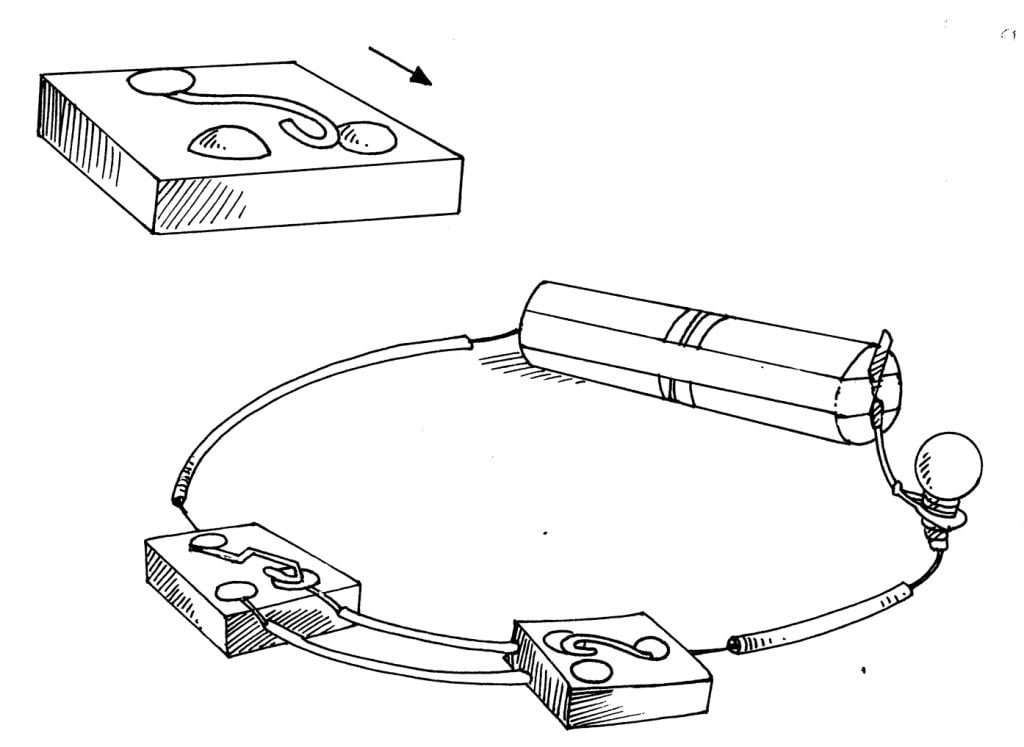
Can two switches control a light from two different locations? Find out in this experiment.
Things Required:
Two “D” cells in battery holders
One torch bulb in lamp holder
Six thumbtacks
Two metal paper clips
Two pieces of wood or thick foam core
Connecting wires with each end stripped 1½ inches bare of insulation
Directions:
For this activity, you’ll need to build two new switches. The switch bases are made from two small blocks of wood. Carefully push three thumbtacks partially into the wood base as shown below. Bend apart a paper clip and wrap it around the thumbtack that is on the side by itself. Don’t push the tacks fully into the wood until the wire connections are in place.
Now assemble the circuit below using these two switches. Unlike the previous switches, these circuit parts are sliding switches. The clip is constantly pushed against the top of the tack or wood surface. When you slide the bent clip onto a tack, you complete a circuit. This circuit remains “on” until you slide the clip off, the tack.
Flip one switch. What happens? Flip the other switch. What happens now? Which switch controls the lamp? Explain.
This Is What Happens:
The circuit is constructed so that both switches may form the path over which the electric current must flow. If either switch is flipped, the circuit will change. If it was open, a flipped switch would close the circuit. If it was closed, a flipped switch would open the circuit. As you might infer, this type of switch is usefulwhen you want to control a light from two different locations.

